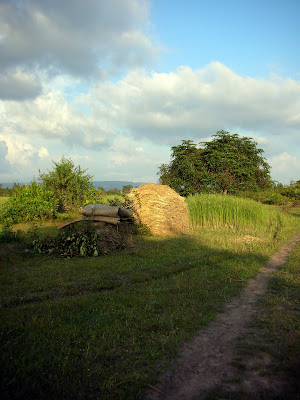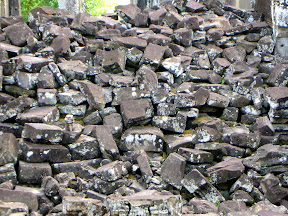
I'm still in Siem Reap. The other guys had to go back home to their day jobs last week. We met with the district governor and the Commune Council this morning to discuss their role in coordinating labor and machines. Tomorrow I'll return to the site for the last day of field work.
Here's a summary of project issues we'll face ahead:
a) Erosion is significant, and large quantities of material have been excavated from the downstream toe at the southerly end of the dam. We'll have to move large quantities of dirt, and will have to verify clayey quality of all borrow material. I have identified some ideal borrow locations that will at the same time improve significantly the reservoir capacity and streamflow direction, while reducing overall effects of evaporation.
b) Canal system has to be designed anew, whether we opt to restore the old canals or construct new ones
c) Much of the work can be self-performed by HT using local labor, under the direction of their construction engineer on staff, Mr. Chanda (he has much construction experience, and has more than demonstrated his competence and dedication during our visit)
For these reasons, we're discussing a different phased construction concept (as opposed to contracting the entire project):
1. Embankment Repair (begin March 2007)
- HT to self-perform this task, using Mr. Chanda as resident engineer
- use 1 excavator, 2 dump trucks, 1 compacting roller (available free from Province)
- local labor to move and spread the material dumped from the trucks (paid in rice)
- local labor to clear vegetation / prepare embankment for repairs
- local labor to plant new landscaping
2. Canal Restoration (begin October 2007)
- HT to self perform this task, using Mr. Chanda as resident engineer
- same equipment and labor as above
3. Water Gate (November 2007)
- Hire contractor, using minimum 10% local labor
- Ideal duration of bid process is four months
4. Inspection and Maintenance Program - generate community understanding of importance of proper maintenance
5. Community Outreach Program (ongoing task, performed by HT)
- assess community needs (health, irrigation, etc)
- establish clear understanding with community members regarding project benefits
- resolve land rights issues among parties farming within the reservoir basin area



